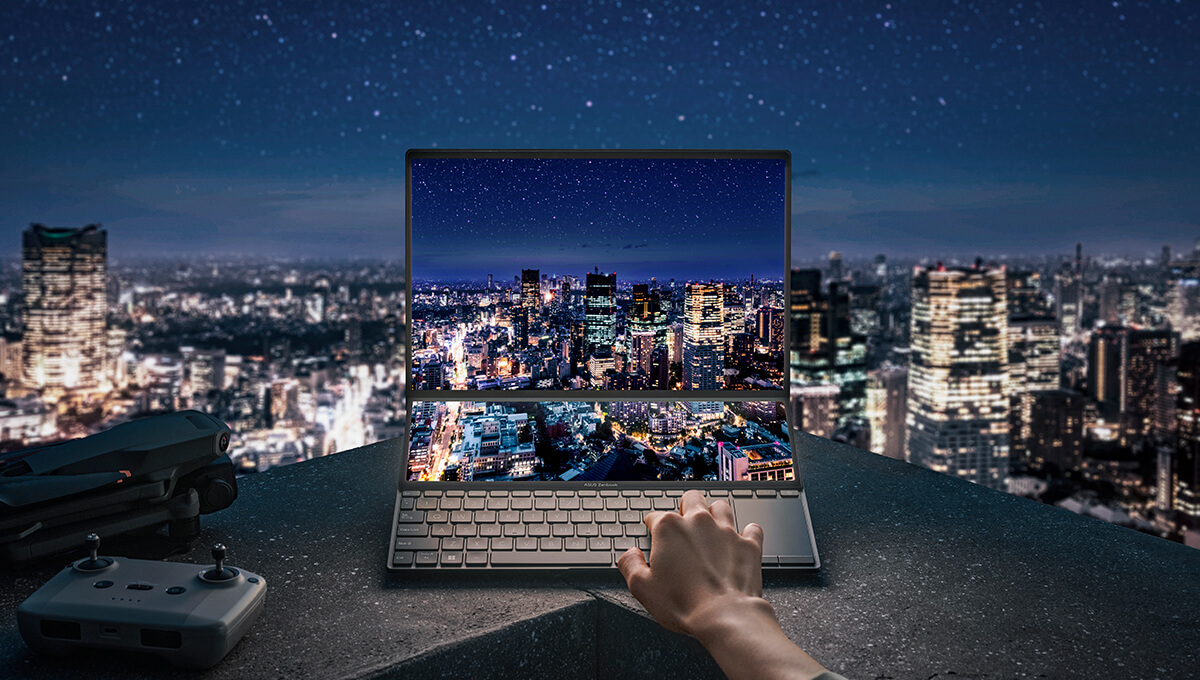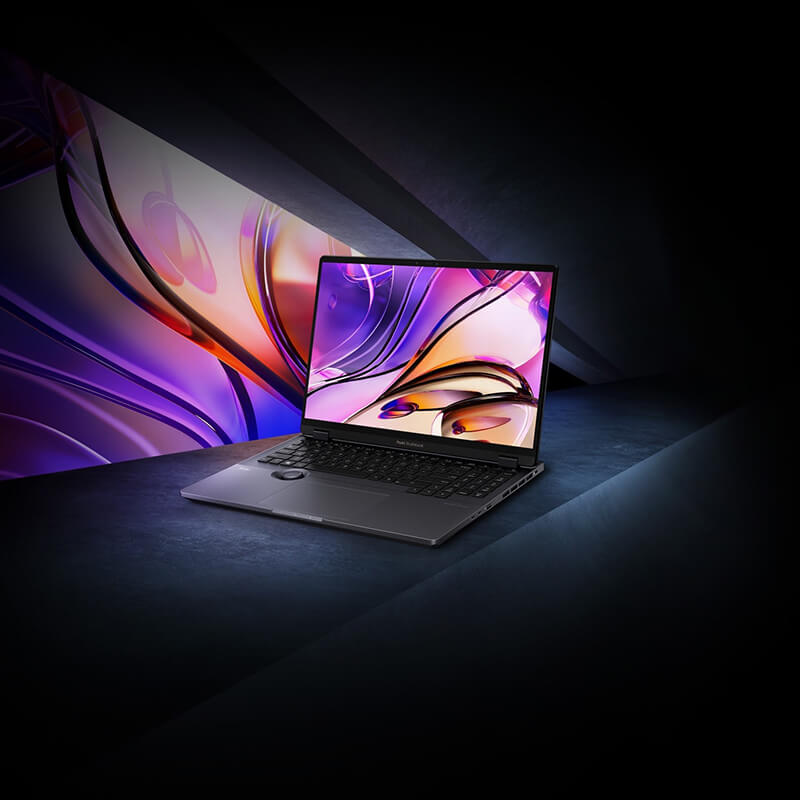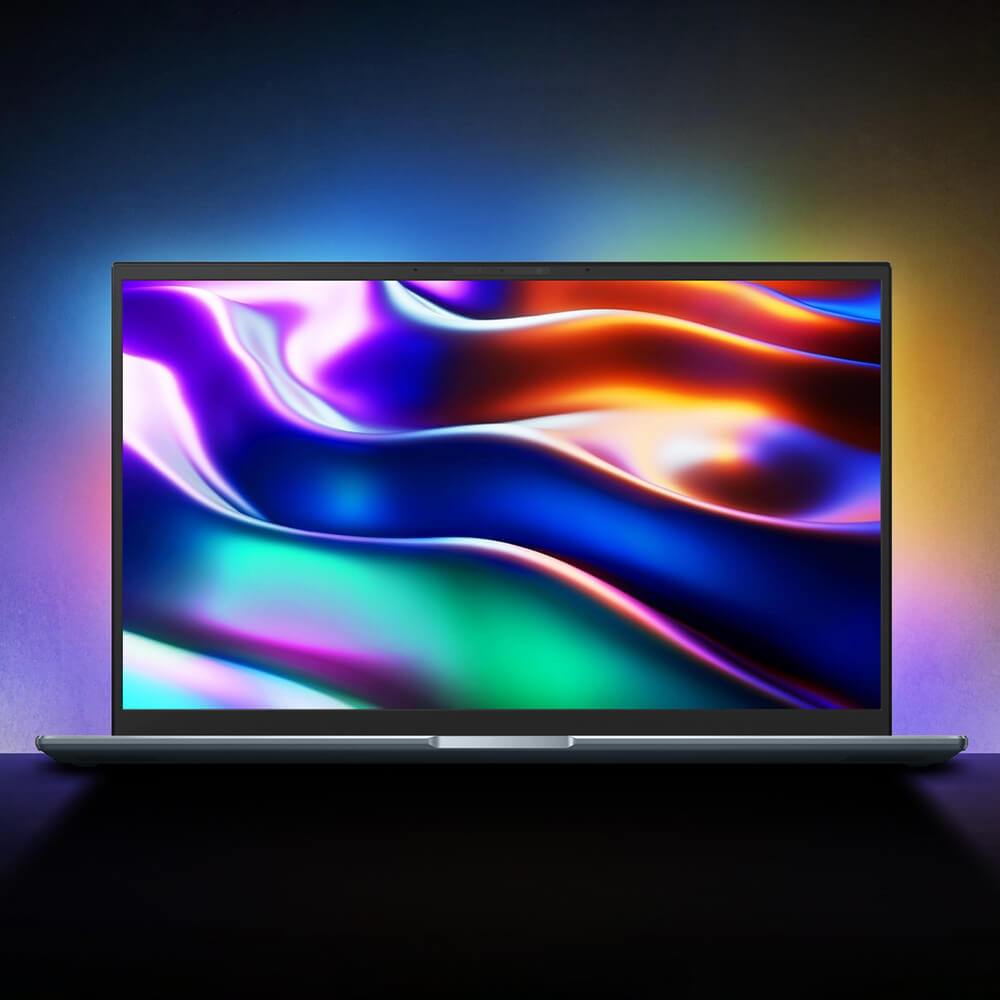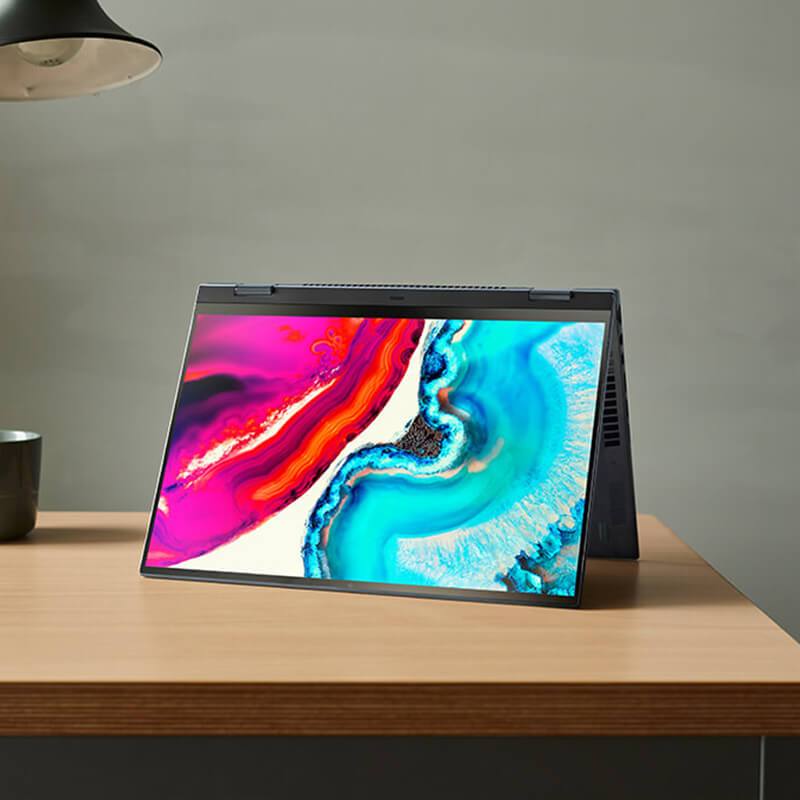
Oct 19, 2023
When shopping for a laptop and comparing different display options,
you will likely notice some of them list out certain specs that may
not be obvious, such as the percentages of different color space
(aka gamut) coverages. The most popular of those are sRGB, DCI-P3,
and Adobe RGB. But what exactly do these numbers mean?
Let’s take a look at what different display color gamut standards
are and how to select the right display for your needs.
What is Display Color Gamut
Color gamut, also known as color space, is the mathematical
description of the range of colors a display can reproduce. It’s
also used in recording devices, such as cameras, to describe how
many colors the device can capture.
Color gamut is usually graphically demonstrated on a two-dimensional
graph called a chromaticity diagram, with the visible color spectrum
imagined as a shape similar to a rounded triangle, with basic
display colors —red, green, and blue — lying on the corners, and
white being around the middle of the graph. It usually looks like
this:
When talking about color, we usually use three dimensions: hue,
saturation, and brightness. But three dimensions are hard to display
on a screen, so the traditional, most commonly used gamut graph
ignores the brightness and instead focuses on hue and saturation
only.
It's worth noting that the source gamut and the display gamut should
match for optimal results. The color spaces can be "translated", but
sometimes, especially when transforming from a larger to smaller
color gamut (e.g. Adobe RGB to sRGB), some “out of gamut” values can
return inaccurate results. When capturing or creating content, it’s
best to keep in mind where it will be displayed from the start and
adjust the source color gamut accordingly.
Now, in such a graph, different color space standards are
represented by triangles placed inside the full-color spectrum
shape, to describe the range of colors each of the standards covers.
These standards vary, depending on their purpose. Let’s take a look
at the three most popular ones.
sRGB
The most common standard for consumer computer displays is sRGB. It
covers approximately 35% of all visible colors, making it a somewhat
basic color gamut.
It was created in 1998 by the International Electromechanical
Commission (IEC) to standardize how colors are reproduced on
computer screens and the Internet. It’s now also frequently used in
smartphones and other digital devices, as well as TV screens and
many inkjet printers. As a result, it’s frequently the default color
space in many digital cameras and scanners as well. The goal is to
ensure consistent color reproduction across many different digital
devices and media.
The sRGB color gamut standard should be something that you should
pay attention to if you wish to create content intended for screens
(e.g. social media content), or simply wish to enjoy colorful, vivid
images when watching movies, surfing the internet, or gaming.
DCPI-P3
DCI-P3 is a color gamut standard developed by the Digital Cinema
Initiatives and is said to cover about 25% more colors than sRGB.
DCI-P3 is more evenly spread out across the color spectrum, as
opposed to Adobe RBG with its slight cyan bias.
It’s particularly popular among video professionals as well as
gamers. This color gamut is supposed to replace the sRBG as the
standard in the foreseeable future. It is now growing in popularity,
becoming more and more the leading indicator for modern high-end
displays’ color quality. It’s also compatible with HDR (high dynamic
range), which makes it an attractive one to pay attention to for
vivid visuals with great contrast.
DCI-P3 is especially well suited for high-resolution video. If you
work with video content, enjoy high-end cinematic experiences, or do
some serious gaming, this is the standard you should pay attention
to. In addition, as this is becoming more and more the “general”
standard for displays, casual and productivity users would also
benefit from laptop screens with rich DCI-P3 coverage.
Adobe RGB
Adobe RGB is a color model created by the company behind the world’s
most popular creative software suite — Adobe. It is often considered
to be approximately 35% wider than the sRGB.
Adobe RBG was designed for professional photographers and was made
to be compatible with CMYK printers. It excels particularly in the
reproduction of the green and blue colors, where it significantly
exceeds the sRGB standard. The result is a vibrant, saturated color.
This is the standard that professional visual content creators
should pay attention to —especially photographers and others who
create content for print.
Other Indicators of Color Accuracy
While color gamut tells you how many colors your laptop display is
capable of reproducing, it would be good to pay attention to color
accuracy as well. There are two ways to verify this.
The first is the more obvious one. As the absolute authority in the
world of color, Pantone awards the displays with outstanding color
accuracy and great color fidelity with a Pantone Validated badge.
This is an indication of the screen's ability to accurately
reproduce colors according to the Pantone Matching System. This is
especially useful for those working with content for print.
If you wish to look deeper into the display spec table, you will
also notice a Delta E (∆E) metric. It’s a mathematical measurement
of the color variance, indicating how much of a difference there is
between the color you are supposed to see, and the color the screen
displays. The smaller the number, the better. For professional
content creators who need a color-accurate screen, you should aim at
the Delta E metric below 3.
Choosing a Suitable Laptop Display
When choosing laptops and selecting different screen options, the
color gamut is an important indication of how many colors it can
reproduce. But there is more to a display than that.
You will also want to pay attention to the technology used. OLED
displays, such as the
ASUS Lumina OLED
ones, tend to offer superior viewing experiences, with deep, inky
blacks and great color accuracy, even with the low brightness level.
They also cut down the blue light emissions and flicker, helping you
protect your eyes.
The screen resolution should also be one of the main considerations.
Full high-definition (FHD), also known as 1080p (1920x1080) would be
the minimum for a modern display. You can also often find QHD
(2560x1440) screens on some laptops. Top-end laptops can even
feature up to 4K resolution (3840 x 2160), which assures
outstandingly crisp, detailed images.
Another useful indicator of screen quality would be the refresh
rate. As described in Hertz (Hz), it's a measure of how many images
the screen can show per second. The higher the number, the smoother
the on-screen movement. 120 Hz would be a good number for anyone who
cares about good visuals.
At the end of the day, you will need to evaluate what you need the
laptop for, and what will be your priorities. If color accuracy is
the top priority for you, you will want to consider laptops with as
much as 100% DCI-P3 color gamut coverage. 100% sRBG coverage would
be plenty to ensure outstanding visuals for everyday activities if
you don't need the pro-grade color reproduction. And either way,
it's great if the laptop's screen is Pantone validated. This is a
great indication that not only the laptop shows a lot of colors, but
it also reproduces them accurately.
Armed with this knowledge, you should be ready to choose the laptop
with the perfect display for your needs. Make sure to learn more
about ASUS Lumina OLED and check out the ASUS laptops equipped with
such screens by clicking the button below!
Discover ASUS Lumina OLED













